About a year ago, I wrote a story with the headline “The hyperloop is dead for real this time,” based on the news that Hyperloop One, one of the biggest companies pursuing Elon Musk’s dream of tube-based, 700mph travel, had shut down.
Technology
Printful and Printify ink a merger deal
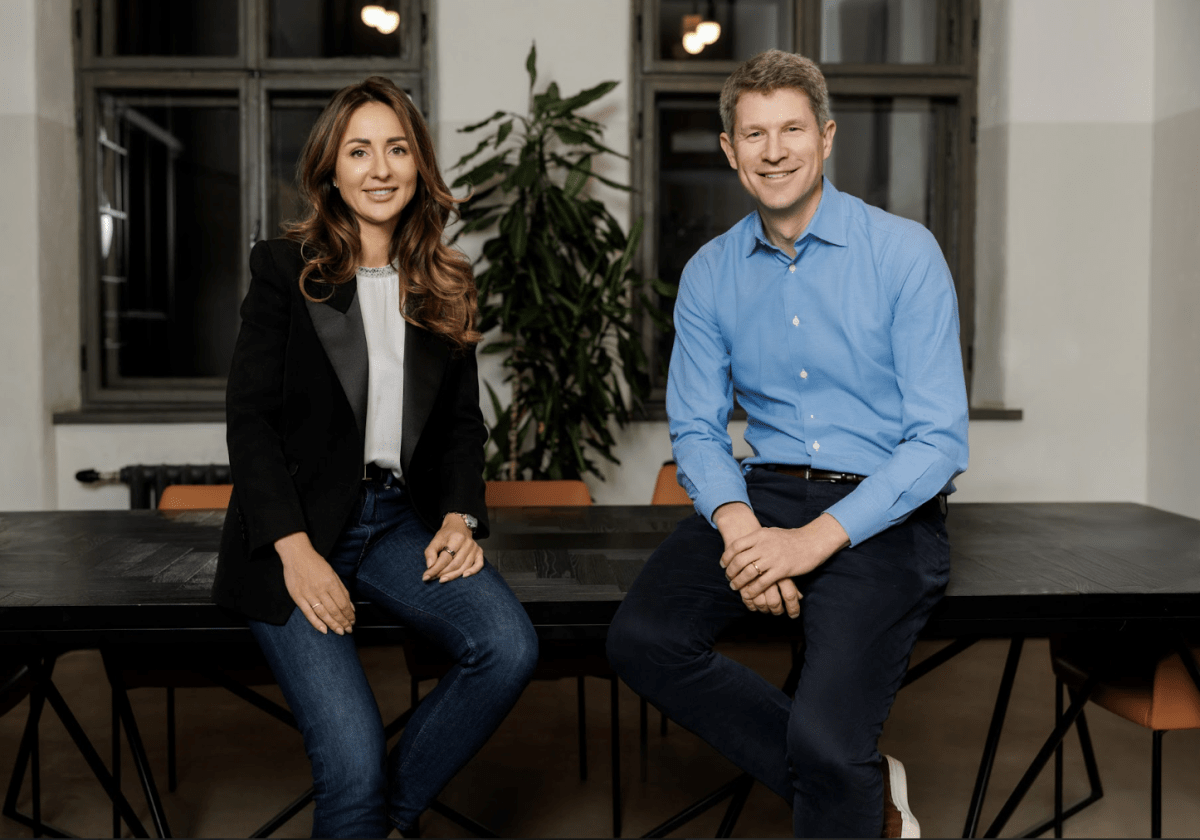
Two veteran European companies in the world of on-demand printing are merging, and you may have not even realised they were separate companies to begin with. Printful and Printify, both startups with Latvian roots providing custom printing services, are coming together as a single company.
They are framing the move as a natural fit to unlock greater economies of scale, efficiencies and profitability. But reading between the lines, it also underscores the struggles that startups in the on-demand manufacturing space, and the creator economy, are facing as single companies. Funding for later-stage startups has been especially challenging in Europe over the last several years, and it looks like 2025 will be no exception. While category growth looks to have slowed vs earlier years: the two companies said they currently reach “hundreds of thousands” of customers.
Mergers typically aim to drive efficiencies through headcount reduction. Asked about layoffs, a spokesman for the pair said: “There will be some areas of overlap between the two companies and some changes to teams will take place. The company leadership will ensure that this process is clear, transparent and efficient.”
While the two existing brands will be maintained for the “foreseeable future”, per a press release, a new company name is planned — but is being kept under wraps for now. There will also be a new management team put in place, though both CEOs are slated to stay on. Also on the cards: new products — or “increasingly tailored and innovative solutions”, as their PR puts it.
Financial terms of the deal are not being disclosed.
The merged company said it plans to expand into more markets, serving everything from solo-entrepreneurs up to Fortune 500 companies wanting to be able to offer their own brand merch.
In terms of metrics, the companies are not providing like-for-like numbers. Printful says its business fulfils “more than a million” items a month, while Printify reports generating over 60 million orders since being founded almost a decade ago. Three years ago, Printify reported shipping a million units a month, although it’s not clear what its growth has looked like since then, so make of that what you will.
Printful was founded back in 2013 and has taken in $130 million in private equity funding, according to CrunchBase. Printify has raised a total of just over $54 million since being founded back in 2015. Investors include Index Ventures.
Commenting on the merger in a statement, Alex Saltonstall, Printful’s CEO, dubbed the development an “exciting moment for everyone”. Saltonstall has been in the job just over two years, following management changes after the original co-founder stepped back and took on an advisor role in summer 2022.
“Printify is a business that we have long respected and I believe that there is a natural fit between the two companies,” he said. “I’m excited to see our two great technology companies combine strengths and provide our customers with ever improving opportunities to fulfill their business goals.”
Printify’s CEO Anastasija Oleinika is even more relatively recently in post: she went from CFO to the top job in April 2023, when the founder moved to an exec chairman role. “Our combined company will give our merchants more,” she said in her statement. “More top-quality products, more places to sell, more innovative solutions, and more growth and profit.”
Consolidation can also be a strategy to drive up prices by reducing consumer choice — a tactic that private equity has been known to deploy — so it will be interesting to see whether claims of greater product choice translate into fewer and higher prices for the pair’s users in future, or see them ‘innovating’ to expand value for their customers, too.
The merger has already passed regulatory review, according to the companies, as well as receiving “overwhelming support” from both their shareholders. So it’s full steam ahead for Printfulify — or whatever the combined entity will be called.
Technology
Galaxy Tab S10 growth drives Samsung’s strong Q3 tablet sales
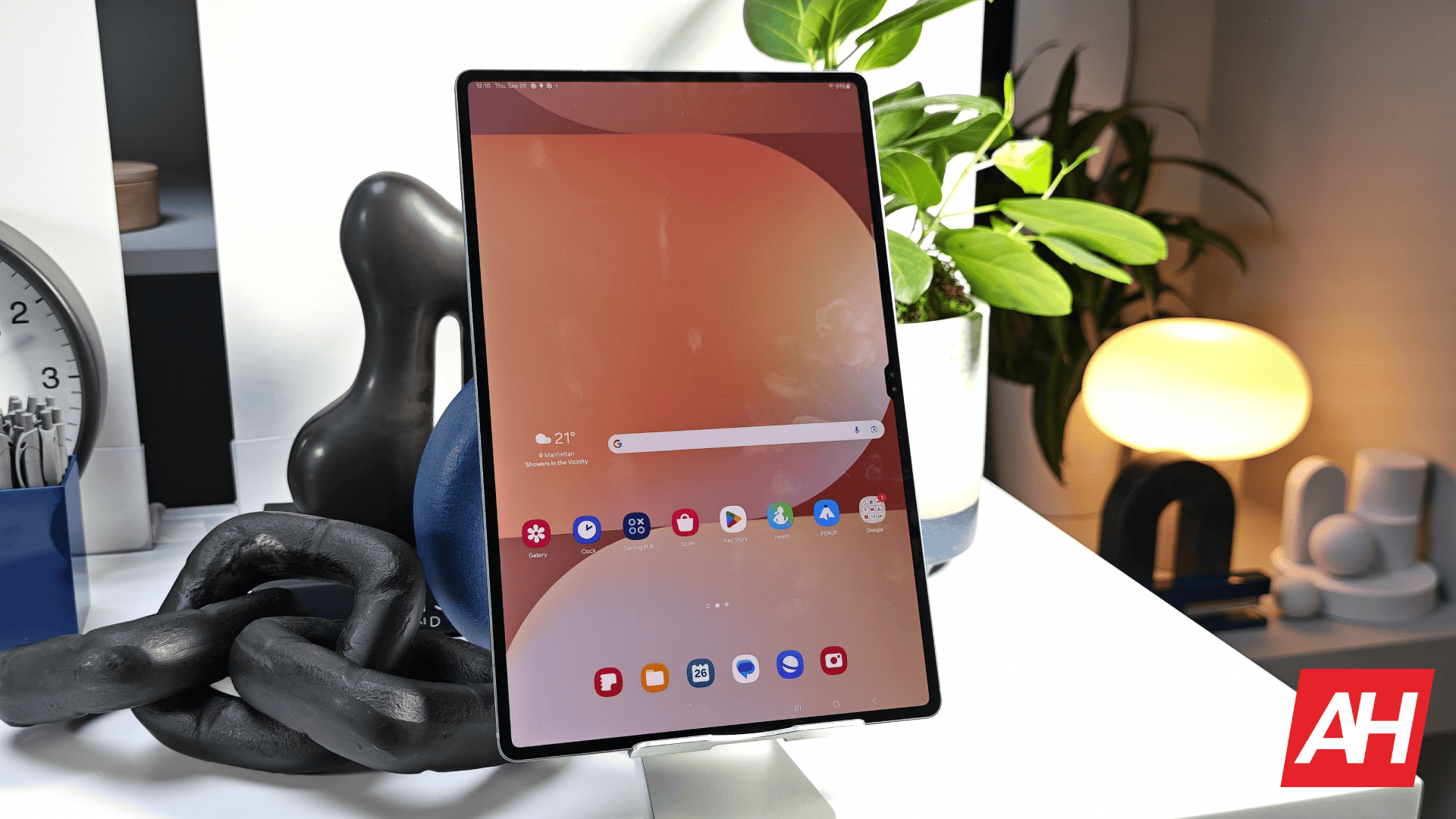
The global tablet market saw notable gains in the third quarter of 2024, with Samsung emerging as a top player due to the Galaxy Tab S10 series. According to a recent report by IDC, tablet shipments worldwide grew by 20.4% year-over-year, with Samsung achieving an 18.3% growth, largely attributed to its latest Galaxy Tab S10 lineup. This surge highlights Samsung’s focus on diverse models to meet market demands.
Samsung capitalizes on Galaxy Tab S10 growth
Samsung shipped 7.1 million units in Q3, securing a robust 17.9% market share. The Galaxy Tab S10 series, especially the Galaxy Tab S10 Ultra and Galaxy Tab S10+, drove much of this growth. The premium features of the Galaxy Tab S10 Ultra and S10+ models, which include advanced AI functions, have helped Samsung attract a wider customer base, particularly in commercial deployments.
IDC analysts note that the Galaxy Tab S10 growth highlights Samsung’s focus on premium offerings alongside its more affordable Galaxy Tab A9 series, which also contributed significantly to sales in various regions. The dual approach has enabled the tech giant to cater to different customer segments, further solidifying its position in the tablet market.
The Galaxy Tab A9 series was another success story for Samsung in Q3 2024. These models, priced for budget-conscious consumers, found strong demand across multiple regions, particularly in emerging markets. This combination of premium and budget models has helped the company capture market share more effectively, especially as consumer demand for cost-effective technology solutions grows.
With the Galaxy Tab S10 growth continuing, Samsung’s diverse lineup allows the company to attract both high-end and entry-level consumers. This strategy not only boosts sales but also helps the company maintain a competitive edge against other Android tablet manufacturers.
Competitors see mixed Growth as Samsung advances
While Samsung experienced significant growth, other Android-based manufacturers reported varied results. Amazon saw a remarkable 111.3% year-over-year increase in tablet shipments, mainly driven by Prime Day deals on its Fire tablet series. Lenovo also recorded moderate gains, though it dropped to fifth place in global rankings. Meanwhile, Apple, despite its 31.7% market share, reported only 1.4% growth, indicating a slower pace compared to Android competitors.
The tablet segment remains competitive, but Samsung’s diverse offerings and focus on innovation solidify its standing as a strong alternative to Apple’s iPad lineup.
Technology
Mozilla Foundation cuts 30 percent of its staff
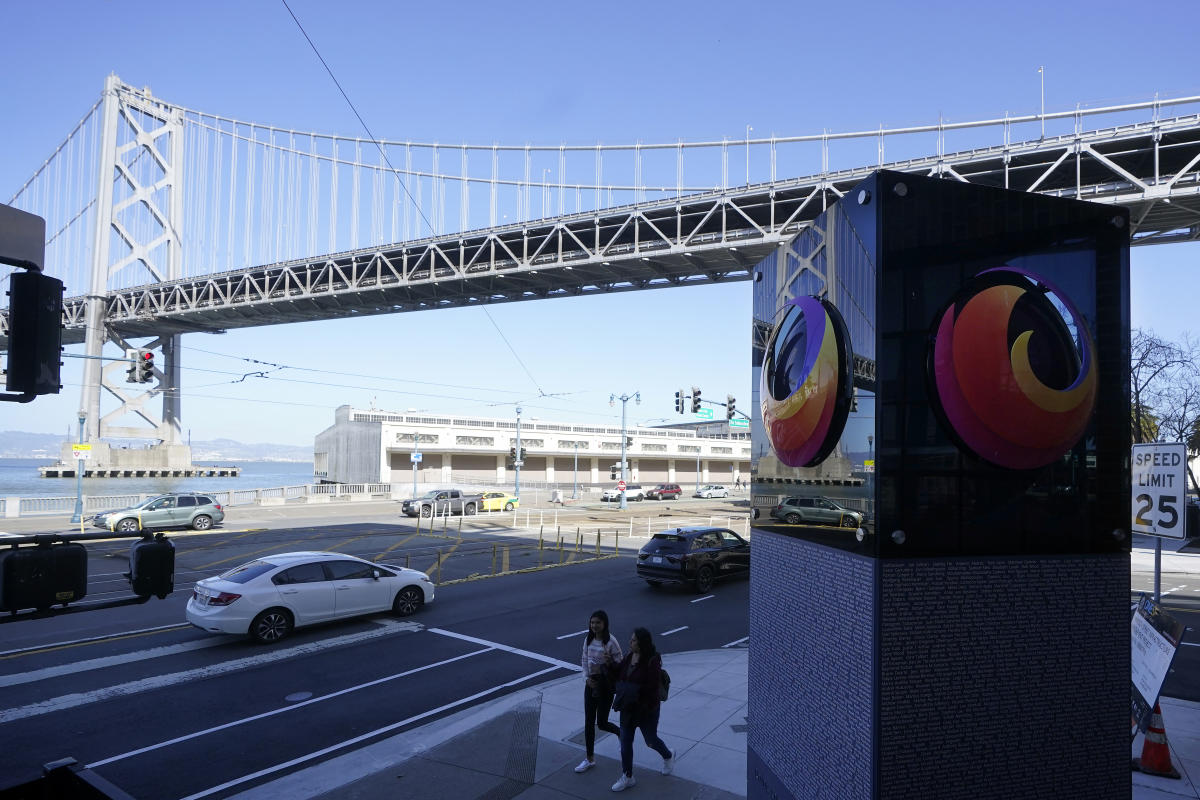
The Mozilla Foundation has made steep cuts to its team. The 30 percent staff cuts will completely eliminate the nonprofit’s advocacy and global programs divisions, according to an internal email sent by Mozilla Foundation Executive Director Nabiha Syed. reported on the news, and Mozilla confirmed the cuts in a statement to the publication.
“The Mozilla Foundation is reorganizing teams to increase agility and impact as we accelerate our work to ensure a more open and equitable technical future for us all,” the statement read. “That unfortunately means ending some of the work we have historically pursued and eliminating associated roles to bring more focus going forward.” We’ve reached out to the Foundation and will update if we receive any additional comment.
The Mozilla Foundation is a nonprofit arm under the bigger Mozilla umbrella; Mozilla Corporation is the arm responsible for the Firefox browser. In February, Mozilla that about 60 workers would be laid off, primarily on the product development team.
Developing…
Technology
Nodal connects hopeful parents with surrogates as reproductive freedom hangs in limbo

Many people who want to have children can’t, or shouldn’t, carry a pregnancy for a variety of reasons. Gestational surrogacy can be a great option for those individuals — if they can endure the lengthy wait times and afford to pay for the costly service. New York-based Nodal looks to make the process less expensive, more transparent, and faster.
Nodal is a marketplace for prospective parents to get matched with vetted surrogates. Nodal founder and CEO Dr. Brian Levine told TechCrunch that his company wants to fix the industry’s supply-and-demand problems.

Nodal takes the same technology-driven approach as life insurance companies to vet potential surrogates, Levine said, which speeds up the process and allows for more surrogates to be available. The marketplace approach also provides transparency for parents to have more control over which surrogate they work with. Nodal also cuts out middleman costs and works with fertility benefit companies like Carrot, Maven, and Progyny to lower the costs for prospective parents.
Levine said Nodal is designed to help lower costs, even for people who are paying out of pocket. Users pay a $500 monthly fee until they find a match. Facilitating the match is $15,000, and those monthly payments chip away at that total. If users want Nodal to serve as a case manager, those services start at an additional $10,000. While still expensive, Levine said prior to launching Nodal, his patients were spending up to $180,000 for all of this.
“We have saved our intended parents over $5 million in fees,” Levine said. “We have saved them over a century of waiting time because we are running 45 days on average to match. The average in America is nine to 18 months. You can have a baby on the Nodal platform before you get off the waitlist at a Nodal competitor.”
Levine knows the space well as a still-practicing physician with a speciality in obstetrics and gynecology. He got the idea for Nodal back in 2021 when New York became the 48th state to legalize gestational surrogacy; only Louisiana and Nebraska still don’t allow the practice. While Levine originally was excited that the ruling would open up opportunity for his patients in the state, that’s not exactly what happened.
“I was totally jazzed by this whole thing,” Levine said. “Very quickly I realized that it was truly a broken system. The cost had gone from $75,000 to $150,000 overnight. The reason it got so expensive is because supply and demand took hold. We are the largest fertility market in America; it literally drove up the price all over the country.”
The price increases weren’t benefiting the surrogates but rather padding the pockets of the matching agencies. Levine thought there must be a way to make this process better for both sides using technology, which led him to work on Nodal; it’s named after the protein that must be present in the uterus to be able to carry a baby.
The product officially launched in September 2022, is available in all 50 states, and has since matched 108 hopeful parents with a surrogate. The average clinic matches 25 a year, Levine said.
Now the startup is announcing a $4 million seed extension round led by NFX that gives the company a $15 million post-money valuation. The round also included Amplo, Liquid 2, and Myelin VC, among others. The company has raised $8.7 million in total.
Levine said that Nodal wanted to hit $10 million in annual recurring revenue before it raised their Series A round. He added that they didn’t really need to raise this round but thought it made sense as a reproductive health company amid the uncertainty surrounding the results of Tuesday’s U.S. presidential election.
“I didn’t know how this election was going to sway,” he said. “It would be myopic to not raise for women’s healthcare before the world potential changes into what could be a very challenging time for reproductive health.”
The company will invest the funds entirely into the technology, Levine said. Nodal wants to increase its partnerships with fertility clinics, too, so that more people can easily get referred to Nodal when they are looking to build a family.
Despite demand, there seemingly aren’t any direct competitors for Nodal beyond traditional surrogacy agencies, which are still just scratching the surface. Levine estimated that the current system fulfills less than 10% of overall demand for surrogates, which means Nodal can grab substantial market share. But it has a long way to go.
“From a big picture perspective, what I hope people take away is this is a company that is completely focused on transparency, speed, and safety,” Levine said. “It’s unfortunate that the industry has gotten where it is today. It’s opaque, analog, and clunky. We recognize that we have the opportunity to really help people.”
Technology
The hyperloop lives on as a 1/12th scale model in Switzerland
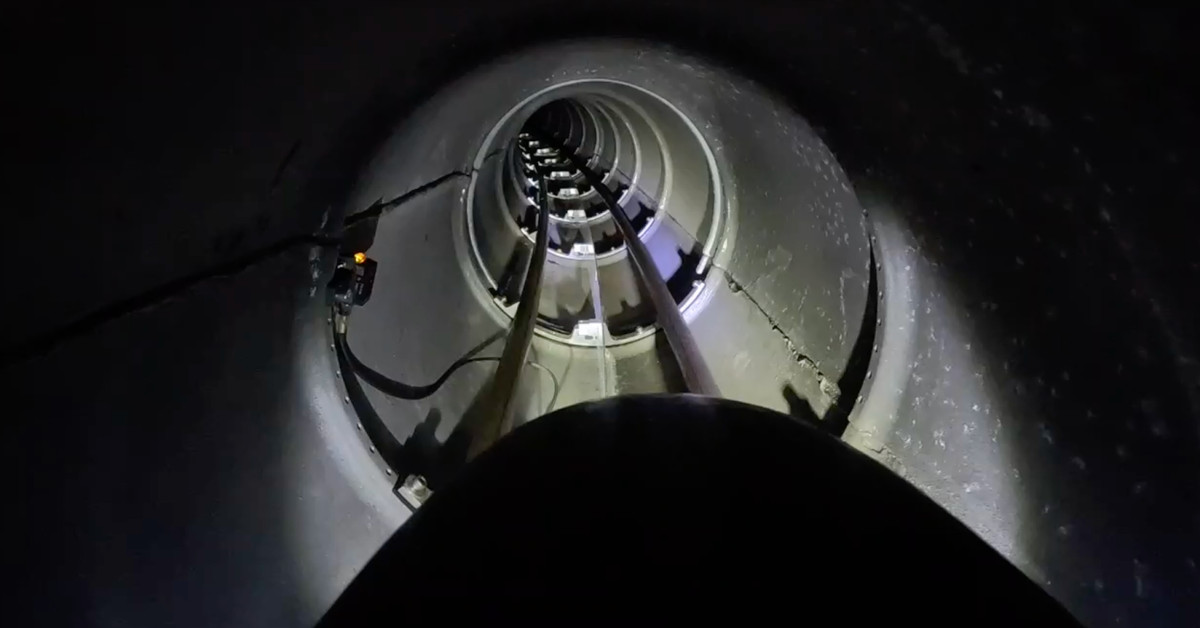
Well, I stand corrected. The hyperloop, in fact, lives on — as a 1/12th scale model in Switzerland.
Sure, this isn’t exactly the full realization of Musk’s 2013 white paper, in which he theorized that aerodynamic aluminum capsules filled with passengers or cargo could be propelled through a nearly airless tube at speeds of up to 760mph. These tubes, either raised on pylons or sunk beneath the earth, could be built either within or between cities. Musk called it a “fifth mode of transportation” and argued it could help change the way we live, work, trade, and travel.
The idea is being put to the test in Lausanne, Switzerland, where a 120-meter circular test track is being operated by a team that includes the Federal Institute of Technology Lausanne (EPFL), the School of Business and Engineering Vaud (HEIG-VD), and Swisspod Technologies. This week, the group announced that it had conducted “the longest” hyperloop test of its kind: traveling 11.8 km (7.3 miles) at a speed of 40.7km/h (25.3mph).
The circular test track has a circumference of 125.6 meters (412 feet) and a diameter of 40 centimeters (15.7 inches). It sounds modest, but the group claims that in a full-scale system, their test “directly translates” to a journey of 141.6 km (88 miles), which is about the distance between Geneva and Bern, or San Francisco to Sacramento, and speeds of up to 488.2 km/h (303.4mph).
The project is called LIMITLESS, which stands for Linear Induction Motor Drive for Traction and Levitation in Sustainable Hyperloop Systems. During the test, the team “monitored the performance of vital subsystems,” including propulsion, communication infrastructure, power electronics, and thermal management. They assessed “energy consumption, thrust variations, [linear induction motor] response, and control during acceleration, cruising, coasting, and braking scenarios.”
Of course, a 1/12th-scale circular test track is hardly a sign that the hyperloop is alive and well. Most of the startups and companies pursuing a full-scale hyperloop have shut down, victims of financial mismanagement, as well as infrastructure and regulatory hurdles. Critics said that while the hyperloop may be technically feasible, it still only amounts to vaporware. It’s been called a “utopian vision” that would be financially impossible to achieve.
But the Swiss team is undeterred, promising to conduct a battery of future tests to further validate the system. Swisspod CEO Denis Tudor said the group plans to test its first freight product soon, and is currently building a larger test track in the US.
“This is a key step toward making hyperloop for passengers a reality and changing how we connect, work, and live,” he said.
That would be a feat unto itself, considering that no full-scale hyperloops exist anywhere in the world. Musk’s test tunnel in California is gone. The man himself has become more enamored with campaigning for Donald Trump than solving the problem of car traffic.
The Boring Company, Musk’s tunneling operation, is still digging underground passageways in Las Vegas — but for Teslas, not hyperloops. The future, it would seem, is nearly the same as the present.
Technology
Nvidia’s RTX 5000 series announcement could be closer than you think as reliable leaker suggests reveal is coming soon


- A new leak hints at an RTX 5000 series reveal sooner than expected
- Previous leaks showcased the possible specifications of the RTX 5090
- The RTX 5090’s leaked price could be accurate based on rumored specs
There have been a plethora of rumors and leaks regarding Nvidia’s upcoming GeForce RTX 5000 series reveal, but according to a reliable leaker it could be much closer than anticipated.
Spotted by Wccftech, Kopite7kimi on X, hinted at Team Green’s inevitable announcement in a post that states ‘We will meet GeForce of Blackwell soon’ – the user accurately revealed some specifications of the RTX 4080 (and the RTX 5090 which isn’t officially confirmed), which suggests an announcement or teaser could be upon us before the end of the year.
We know Nvidia’s CEO Jensen Huang will be delivering a CES 2025 keynote, which is a big indication of the GPU series reveal – this could mean Kopite7kimi is referencing the CES 2025 event or an incoming teaser from Team Green. Regardless, we won’t be waiting very long to see the RTX 5000 series unveiled, with CES coming in January.
Is the ‘leaked’ price of the RTX 5090 legitimate?
There’s no official confirmation from Nvidia on any of the RTX 5000 GPUs nor their specifications or pricing, but if the leaked specs for the flagship GPU (the rumored RTX 5090) are anything to go by, we could indeed see a $2,500 price tag. Considering the pricing behind the RTX 4090 ($1,599 / £1,499 / AU$2,959 at MSRP) at launch, it isn’t much of a surprise to see rumors of a major price increase.
The RTX 5090 is rumored to utilize 32GB of VRAM, a significant leap from its predecessor’s 24GB – Team Green’s new Blackwell architecture will see the new GPUs driven by AI, with DLSS and Frame Generation expected to play a bigger part with this release. If Nvidia makes DLSS 3’s successor exclusive to the new GPU series (which we hope it won’t), then you can expect the demand to skyrocket.
Scalping with Nvidia’s GPUs has been a significant issue, especially during COVID-19 – the rumored $2,500 price has the potential to make this much worse, but we hope this isn’t the case once the new range launches.
You may like this…
Technology
Another annoying bug is spoiling the fun in Windows 11 24H2
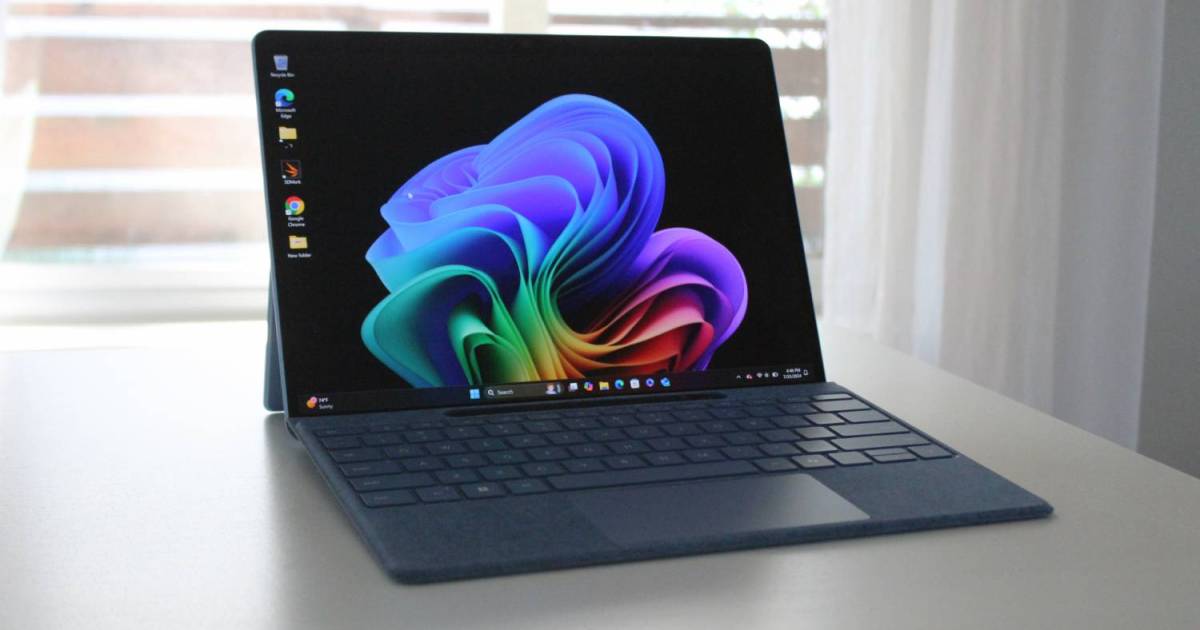

The latest big update to Windows 11 has already caused its fair share of headaches. This time the trouble is with File Explorer. A new bug makes it difficult to open the File Explorer app as it makes the menu appear outside the screen, Windows Latest reports.
The latest bug impacts the “See more” menu, making it practically impossible to access when you select the ellipses. Instead, it only shows you a few of the available options. This error usually appears when you use File Explorer in full screen. When you’re able to see all the options in the “See more” menu, you’ll see options such as:
- Connect to a media server
- Add a network location
- Map network drive
- Select all
- Select none
- Invert selection
- Properties
- Options
Some users have reported this incomplete view regardless of the viewing mode. In theory, the menu is supposed to appear below the button for easy access to the options. But this bug is making various options inaccessible. To view all the options, ensure that the window is small enough, leaving space for the menu options.
The good news is that Microsoft is aware of the bug and will release a fix in a future cumulative update. There is no official confirmation as to when we might see this update, but it’s nice to know that it’s on its way.
This is far from the first problem Windows 11 24H2 users have faced. One of the most common problems is the update crashing PCs, causing slowdowns and blue screens of death (BSOD).
Windows 11 24H2 is off to a bumpy start, so much so that it forced Microsoft to stop the update on PCs such as Asus and configurations for software like Safe Exam Browser, Voicemeter, and older versions of Easy Anti-Cheat that are used mainly by PC gamers.
-

 Science & Environment2 months ago
Science & Environment2 months agoHow to unsnarl a tangle of threads, according to physics
-

 Technology1 month ago
Technology1 month agoIs sharing your smartphone PIN part of a healthy relationship?
-

 Science & Environment2 months ago
Science & Environment2 months ago‘Running of the bulls’ festival crowds move like charged particles
-

 Science & Environment2 months ago
Science & Environment2 months agoHyperelastic gel is one of the stretchiest materials known to science
-

 Technology2 months ago
Technology2 months agoWould-be reality TV contestants ‘not looking real’
-

 Science & Environment1 month ago
Science & Environment1 month agoX-rays reveal half-billion-year-old insect ancestor
-

 Science & Environment2 months ago
Science & Environment2 months agoMaxwell’s demon charges quantum batteries inside of a quantum computer
-

 Money1 month ago
Money1 month agoWetherspoons issues update on closures – see the full list of five still at risk and 26 gone for good
-

 Science & Environment2 months ago
Science & Environment2 months agoSunlight-trapping device can generate temperatures over 1000°C
-

 Science & Environment2 months ago
Science & Environment2 months agoPhysicists have worked out how to melt any material
-

 Sport1 month ago
Sport1 month agoAaron Ramsdale: Southampton goalkeeper left Arsenal for more game time
-

 Technology1 month ago
Technology1 month agoGmail gets redesigned summary cards with more data & features
-

 Football1 month ago
Football1 month agoRangers & Celtic ready for first SWPL derby showdown
-

 MMA1 month ago
MMA1 month ago‘Dirt decision’: Conor McGregor, pros react to Jose Aldo’s razor-thin loss at UFC 307
-

 Science & Environment2 months ago
Science & Environment2 months agoLaser helps turn an electron into a coil of mass and charge
-

 Technology1 month ago
Technology1 month agoUkraine is using AI to manage the removal of Russian landmines
-

 News1 month ago
News1 month agoWoman who died of cancer ‘was misdiagnosed on phone call with GP’
-

 Sport1 month ago
Sport1 month agoBoxing: World champion Nick Ball set for Liverpool homecoming against Ronny Rios
-

 Technology1 month ago
Technology1 month agoEpic Games CEO Tim Sweeney renews blast at ‘gatekeeper’ platform owners
-

 Science & Environment2 months ago
Science & Environment2 months agoA new kind of experiment at the Large Hadron Collider could unravel quantum reality
-

 Technology1 month ago
Technology1 month agoRussia is building ground-based kamikaze robots out of old hoverboards
-

 Technology1 month ago
Technology1 month agoSamsung Passkeys will work with Samsung’s smart home devices
-

 MMA1 month ago
MMA1 month agoDana White’s Contender Series 74 recap, analysis, winner grades
-

 News1 month ago
News1 month ago‘Blacks for Trump’ and Pennsylvania progressives play for undecided voters
-

 Science & Environment2 months ago
Science & Environment2 months agoQuantum ‘supersolid’ matter stirred using magnets
-

 Science & Environment2 months ago
Science & Environment2 months agoLiquid crystals could improve quantum communication devices
-
Business1 month ago
how UniCredit built its Commerzbank stake
-

 Technology1 month ago
Technology1 month agoMicrosoft just dropped Drasi, and it could change how we handle big data
-

 MMA4 weeks ago
MMA4 weeks ago‘Uncrowned queen’ Kayla Harrison tastes blood, wants UFC title run
-

 News1 month ago
News1 month agoNavigating the News Void: Opportunities for Revitalization
-

 Science & Environment2 months ago
Science & Environment2 months agoWhy this is a golden age for life to thrive across the universe
-

 News1 month ago
News1 month agoRwanda restricts funeral sizes following outbreak
-

 Technology1 month ago
Technology1 month agoCheck, Remote, and Gusto discuss the future of work at Disrupt 2024
-

 Sport1 month ago
Sport1 month ago2024 ICC Women’s T20 World Cup: Pakistan beat Sri Lanka
-

 Entertainment1 month ago
Entertainment1 month agoBruce Springsteen endorses Harris, calls Trump “most dangerous candidate for president in my lifetime”
-

 TV1 month ago
TV1 month agoসারাদেশে দিনব্যাপী বৃষ্টির পূর্বাভাস; সমুদ্রবন্দরে ৩ নম্বর সংকেত | Weather Today | Jamuna TV
-

 MMA1 month ago
MMA1 month agoPereira vs. Rountree prediction: Champ chases legend status
-

 News1 month ago
News1 month agoMassive blasts in Beirut after renewed Israeli air strikes
-

 Technology1 month ago
Technology1 month agoWhy Machines Learn: A clever primer makes sense of what makes AI possible
-

 Technology1 month ago
Technology1 month agoMicrophone made of atom-thick graphene could be used in smartphones
-

 Business1 month ago
Business1 month agoWater companies ‘failing to address customers’ concerns’
-

 News1 month ago
News1 month agoCornell is about to deport a student over Palestine activism
-

 Business1 month ago
Business1 month agoWhen to tip and when not to tip
-

 Sport1 month ago
Sport1 month agoWXV1: Canada 21-8 Ireland – Hosts make it two wins from two
-

 News2 months ago
News2 months ago▶️ Hamas in the West Bank: Rising Support and Deadly Attacks You Might Not Know About
-

 Science & Environment2 months ago
Science & Environment2 months agoQuantum forces used to automatically assemble tiny device
-

 Science & Environment2 months ago
Science & Environment2 months agoITER: Is the world’s biggest fusion experiment dead after new delay to 2035?
-

 MMA1 month ago
MMA1 month agoKayla Harrison gets involved in nasty war of words with Julianna Pena and Ketlen Vieira
-

 Football1 month ago
Football1 month ago'Rangers outclassed and outplayed as Hearts stop rot'
-

 News1 month ago
News1 month agoHull KR 10-8 Warrington Wolves – Robins reach first Super League Grand Final
-
Business1 month ago
Top shale boss says US ‘unusually vulnerable’ to Middle East oil shock
-

 Technology1 month ago
Technology1 month agoSingleStore’s BryteFlow acquisition targets data integration
-

 Sport1 month ago
Sport1 month agoChina Open: Carlos Alcaraz recovers to beat Jannik Sinner in dramatic final
-

 Football1 month ago
Football1 month agoWhy does Prince William support Aston Villa?
-

 News1 month ago
News1 month ago▶ Hamas Spent $1B on Tunnels Instead of Investing in a Future for Gaza’s People
-

 Science & Environment2 months ago
Science & Environment2 months agoNuclear fusion experiment overcomes two key operating hurdles
-

 Science & Environment2 months ago
Science & Environment2 months agoA slight curve helps rocks make the biggest splash
-

 Technology2 months ago
Technology2 months agoMeta has a major opportunity to win the AI hardware race
-

 Womens Workouts1 month ago
Womens Workouts1 month ago3 Day Full Body Women’s Dumbbell Only Workout
-

 Technology1 month ago
Technology1 month agoMusk faces SEC questions over X takeover
-

 Sport1 month ago
Sport1 month agoPremiership Women’s Rugby: Exeter Chiefs boss unhappy with WXV clash
-

 Sport1 month ago
Sport1 month agoShanghai Masters: Jannik Sinner and Carlos Alcaraz win openers
-

 Sport1 month ago
Sport1 month agoCoco Gauff stages superb comeback to reach China Open final
-
Business1 month ago
Bank of England warns of ‘future stress’ from hedge fund bets against US Treasuries
-

 Technology1 month ago
Technology1 month agoLG C4 OLED smart TVs hit record-low prices ahead of Prime Day
-

 MMA1 month ago
MMA1 month ago‘I was fighting on automatic pilot’ at UFC 306
-

 Technology1 month ago
Technology1 month agoUniversity examiners fail to spot ChatGPT answers in real-world test
-

 News1 month ago
News1 month agoGerman Car Company Declares Bankruptcy – 200 Employees Lose Their Jobs
-

 Sport1 month ago
Sport1 month agoSturm Graz: How Austrians ended Red Bull’s title dominance
-

 Sport1 month ago
Sport1 month agoWales fall to second loss of WXV against Italy
-
Business1 month ago
DoJ accuses Donald Trump of ‘private criminal effort’ to overturn 2020 election
-
Business1 month ago
Sterling slides after Bailey says BoE could be ‘a bit more aggressive’ on rates
-

 TV1 month ago
TV1 month agoTV Patrol Express September 26, 2024
-

 MMA1 month ago
MMA1 month agoPennington vs. Peña pick: Can ex-champ recapture title?
-

 Money4 weeks ago
Money4 weeks agoTiny clue on edge of £1 coin that makes it worth 2500 times its face value – do you have one lurking in your change?
-

 Science & Environment2 months ago
Science & Environment2 months agoTime travel sci-fi novel is a rip-roaringly good thought experiment
-

 MMA1 month ago
MMA1 month agoKetlen Vieira vs. Kayla Harrison pick, start time, odds: UFC 307
-

 Technology1 month ago
Technology1 month agoThe best shows on Max (formerly HBO Max) right now
-

 Technology1 month ago
Technology1 month agoIf you’ve ever considered smart glasses, this Amazon deal is for you
-

 Technology1 month ago
Technology1 month agoJ.B. Hunt and UP.Labs launch venture lab to build logistics startups
-
Travel1 month ago
World of Hyatt welcomes iconic lifestyle brand in latest partnership
-

 Technology1 month ago
Technology1 month agoQuoroom acquires Investory to scale up its capital-raising platform for startups
-
Business1 month ago
The search for Japan’s ‘lost’ art
-

 Sport1 month ago
Sport1 month agoNew Zealand v England in WXV: Black Ferns not ‘invincible’ before game
-

 Sport1 month ago
Sport1 month agoMan City ask for Premier League season to be DELAYED as Pep Guardiola escalates fixture pile-up row
-

 News2 months ago
News2 months ago▶️ Media Bias: How They Spin Attack on Hezbollah and Ignore the Reality
-

 Science & Environment2 months ago
Science & Environment2 months agoNerve fibres in the brain could generate quantum entanglement
-

 Technology1 month ago
Technology1 month agoAmazon’s Ring just doubled the price of its alarm monitoring service for grandfathered customers
-

 News1 month ago
News1 month agoTrump returns to Pennsylvania for rally at site of assassination attempt
-

 Technology4 weeks ago
Technology4 weeks agoThe FBI secretly created an Ethereum token to investigate crypto fraud
-

 Science & Environment2 months ago
Science & Environment2 months agoHow to wrap your mind around the real multiverse
-

 Business1 month ago
Business1 month agoStocks Tumble in Japan After Party’s Election of New Prime Minister
-

 MMA1 month ago
MMA1 month agoHow to watch Salt Lake City title fights, lineup, odds, more
-

 Technology1 month ago
Technology1 month agoTexas is suing TikTok for allegedly violating its new child privacy law
-

 Technology1 month ago
Technology1 month agoOpenAI secured more billions, but there’s still capital left for other startups
-
Business1 month ago
‘Let’s be more normal’ — and rival Tory strategies
-

 News1 month ago
News1 month agoHarry vs Sun publisher: ‘Two obdurate but well-resourced armies’
-

 News1 month ago
News1 month agoFamily plans to honor hurricane victim using logs from fallen tree that killed him
-

 Money1 month ago
Money1 month agoPub selling Britain’s ‘CHEAPEST’ pints for just £2.60 – but you’ll have to follow super-strict rules to get in
-

 Sport1 month ago
Sport1 month agoURC: Munster 23-0 Ospreys – hosts enjoy second win of season

You must be logged in to post a comment Login